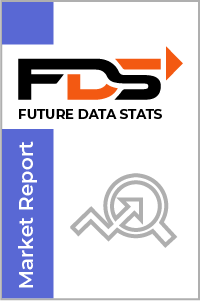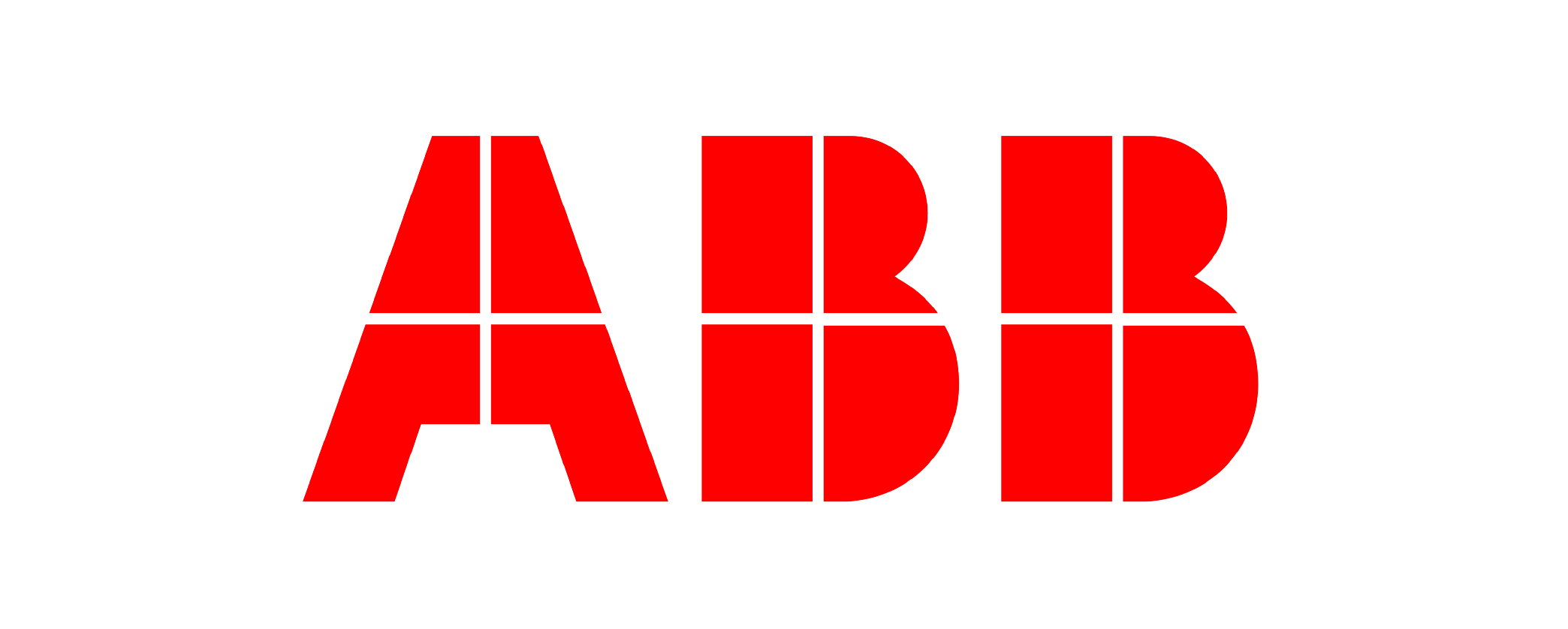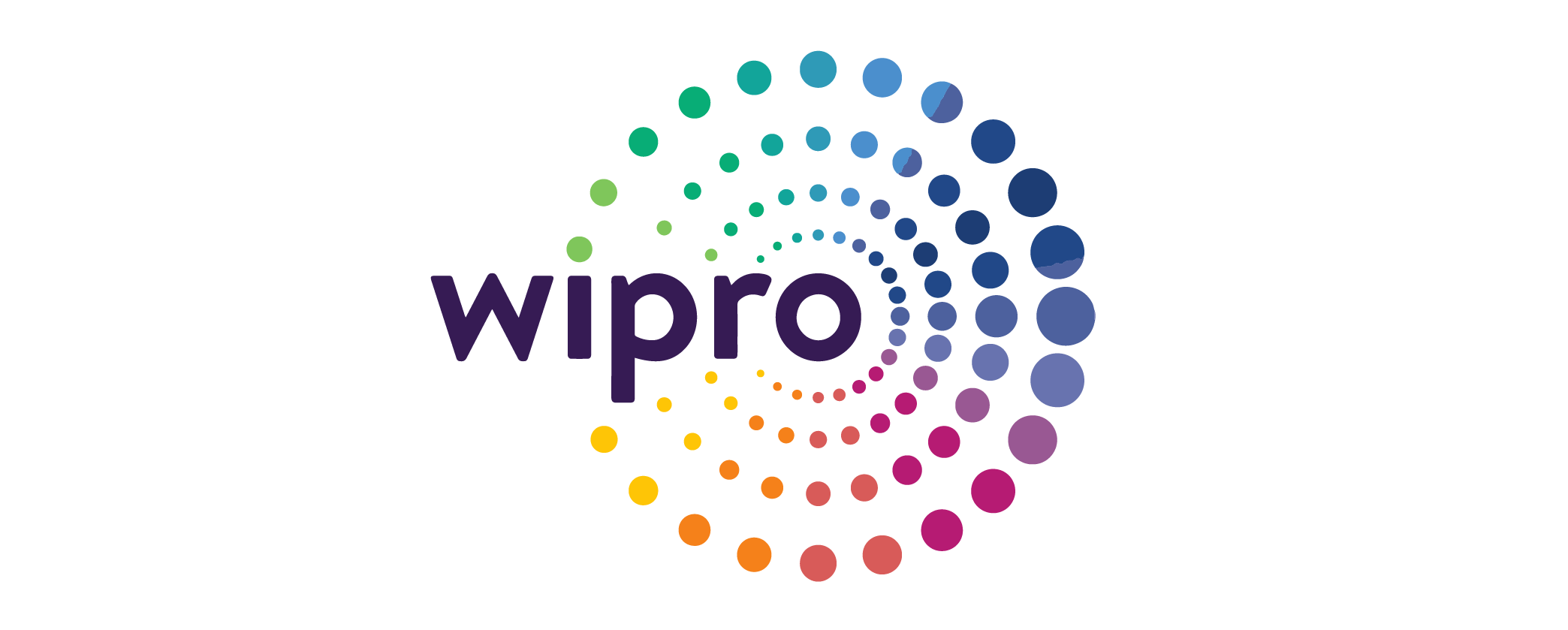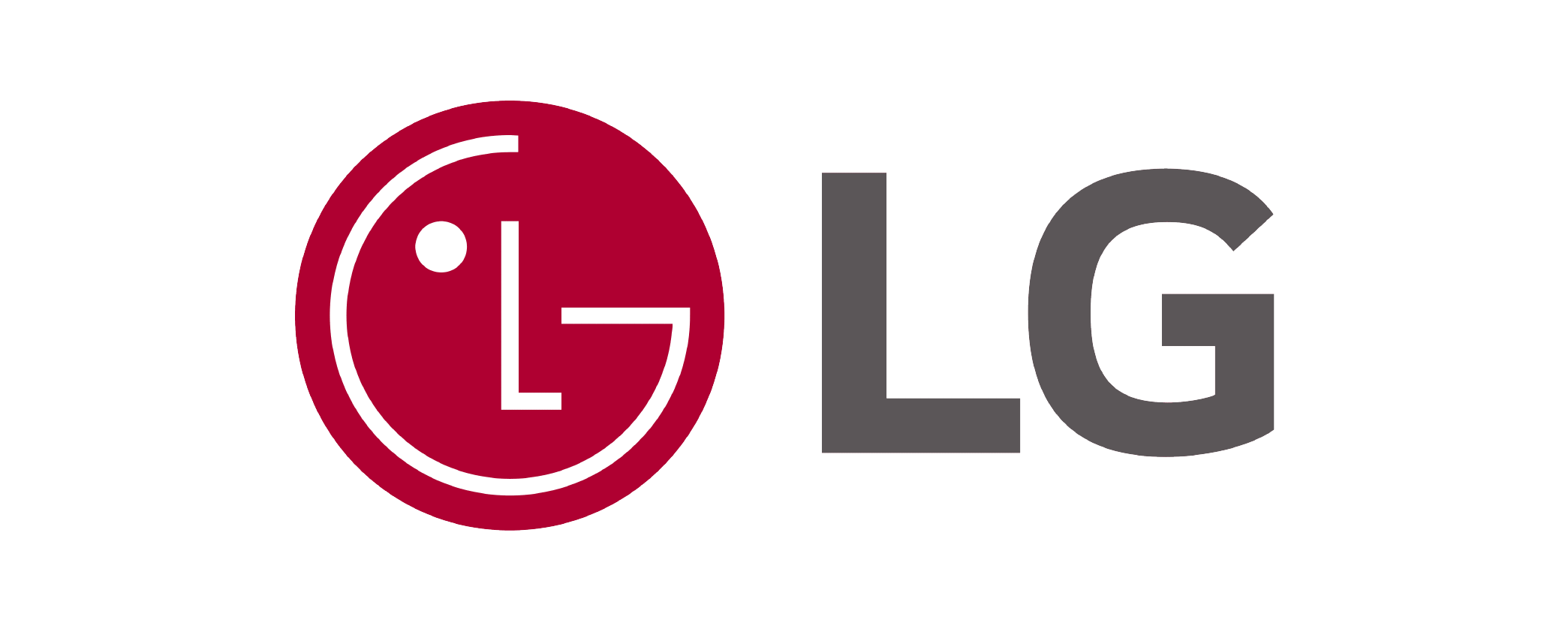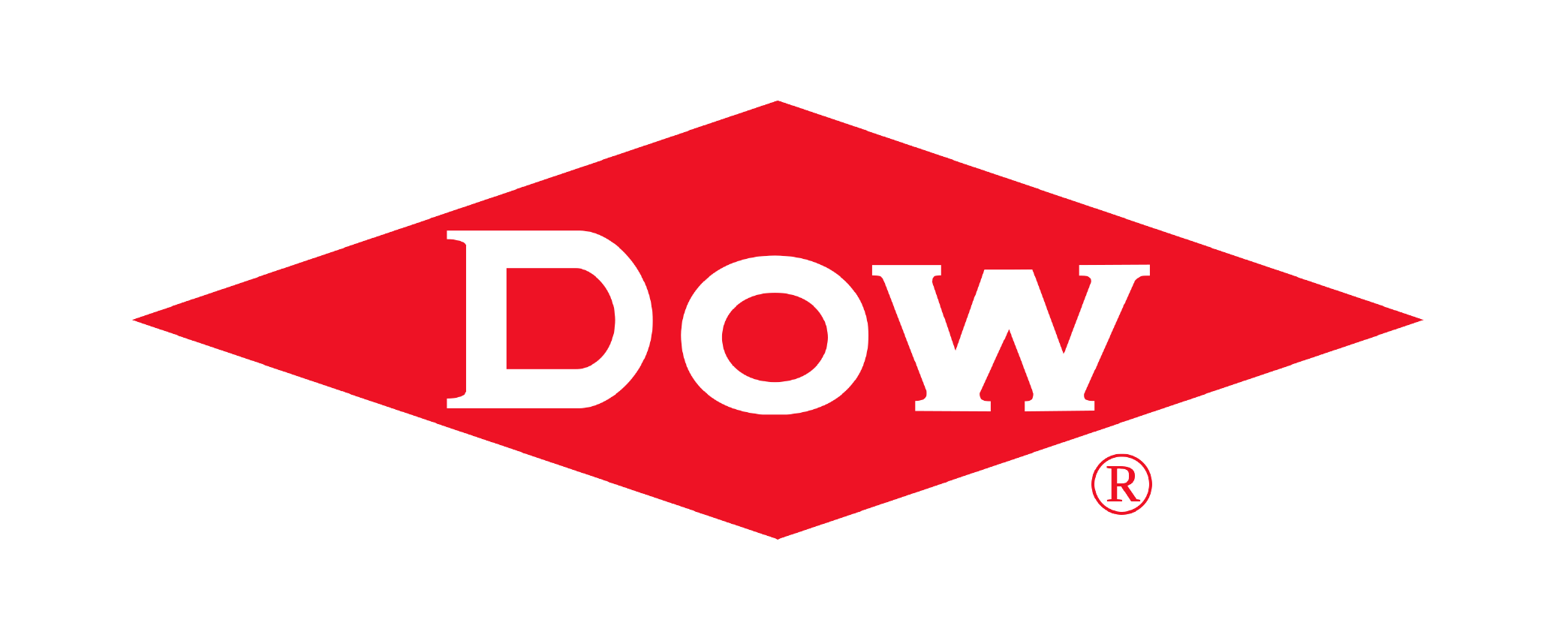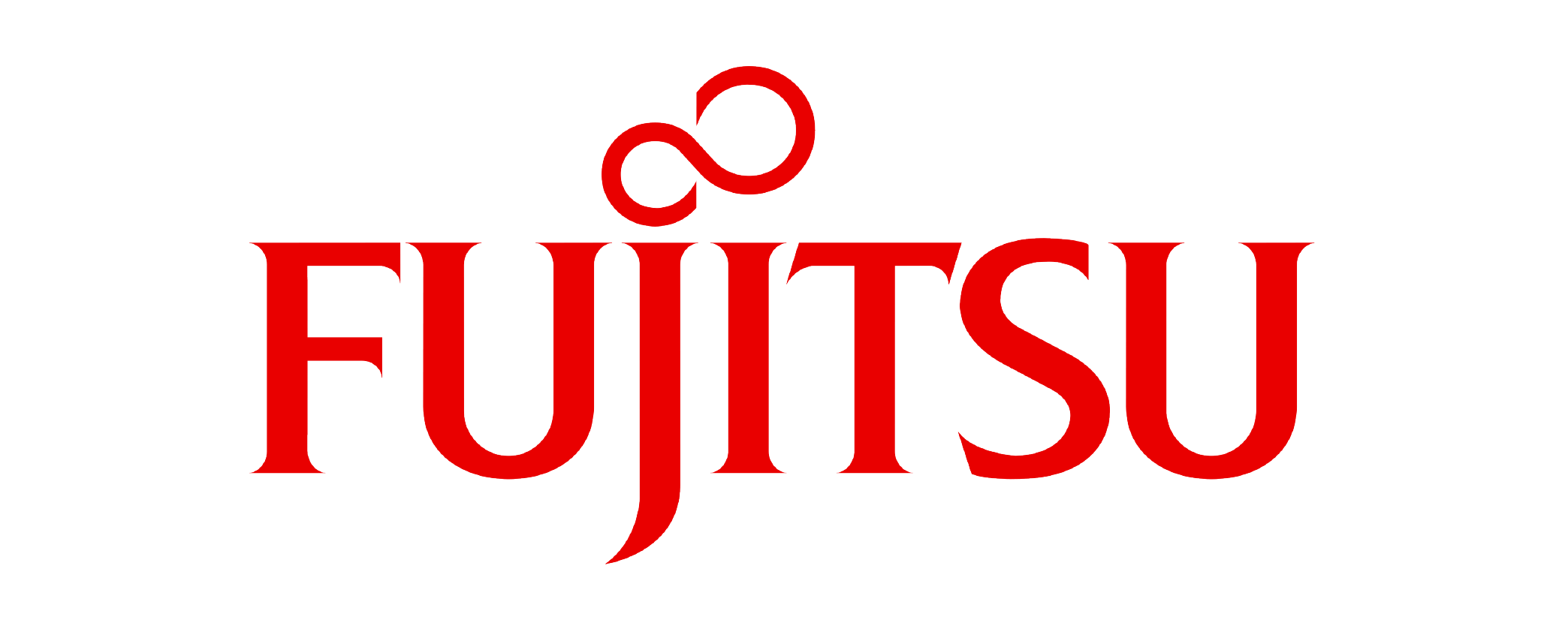The global Wine Market is witnessing consistent growth, with its size estimated at USD 400 Billion in 2025 and projected to reach USD 550 Billion by 2033, expanding at a CAGR of 4% during the forecast period.
The Wine Market Research Report by Future Data Stats presents an in-depth and strategic assessment of the market landscape. Drawing on historical data from 2021 to 2023, the report identifies key trends, evolving growth patterns, and pivotal market dynamics. Anchored in 2024 as the base year, it delivers a detailed examination of consumer behavior, competitive forces, and regulatory frameworks influencing the sector. Extending beyond conventional analysis, the report provides a forward-looking forecast from 2025 to 2033, leveraging advanced analytical methodologies. It maps the anticipated growth trajectory, uncovers emerging opportunities, and highlights potential risks—empowering stakeholders with the actionable intelligence needed to make informed decisions in a rapidly transforming market environment.
MARKET OVERVIEW:
The wine market exists to meet the diverse consumer demand for alcoholic beverages derived from fermented grapes. It connects vineyards, producers, distributors, and retailers to ensure that wine reaches households, restaurants, and events globally. This market supports cultural traditions, social experiences, and personal preferences, offering a wide range of wine types to suit different tastes and occasions. In addition to satisfying consumer preferences, the wine market plays a vital role in local and international economies. It boosts agricultural production, promotes tourism in wine-producing regions, and creates employment across farming, logistics, and retail sectors. Through innovation and branding, the market continues to evolve while preserving its historical and cultural significance.
MARKET DYNAMICS:
Wine producers are embracing digital transformation by expanding into e-commerce platforms and leveraging data analytics to understand shifting consumer behavior. Sustainable winemaking practices are gaining momentum, with many vineyards adopting organic and biodynamic farming methods. Consumers are showing increasing interest in low-alcohol and non-alcoholic wine options, driven by a broader focus on health and wellness. At the same time, premiumization remains strong, as buyers seek unique blends and vintage labels. Looking ahead, the wine market is expected to witness continued innovation in packaging, such as wine in cans and eco-friendly materials, which aim to appeal to younger and environmentally conscious buyers. Emerging markets in Asia and Latin America are offering new growth opportunities, especially as wine becomes more accessible and culturally integrated. With climate change influencing grape cultivation, the industry is also exploring new growing regions, which could redefine global production and trade patterns.
Increasing consumer interest in premium and organic wines has sparked a surge in demand. As more people explore wine tasting and pairings, they seek unique experiences that elevate their enjoyment. Additionally, the rise of e-commerce platforms has made wine more accessible, allowing consumers to easily discover and purchase products from around the world. This accessibility encourages experimentation and attracts a younger demographic, further invigorating the market. However, the wine industry faces certain restraints that could impede growth. Fluctuating weather conditions and climate change pose challenges to grape cultivation, affecting supply and quality. Moreover, regulatory hurdles in various regions can complicate distribution and sales. Despite these obstacles, opportunities abound. Emerging markets in Asia and Africa present untapped potential, as rising disposable incomes lead to increased wine consumption. Furthermore, innovative marketing strategies, such as collaborations with influencers and experiential events, can help brands engage consumers and expand their reach in a competitive landscape.
WINE MARKET SEGMENTATION ANALYSIS
BY TYPE:
Red wine continues to command significant attention across the global wine market, due in part to its heritage, depth of flavor, and perceived health benefits. Its high concentration of polyphenols and antioxidants, particularly resveratrol, has made red wine synonymous with heart health in popular discourse. This connection has driven health-conscious consumers to favor red wine over other alcoholic beverages, especially in developed nations. Beyond health narratives, red wine boasts a wide variety of styles—from bold Cabernet Sauvignon to lighter Pinot Noir—allowing it to appeal to a wide demographic. Its compatibility with red meats, cheeses, and robust cuisines makes it a default pairing in both casual meals and fine dining. White wine, meanwhile, holds firm as a staple for those seeking lighter, fruitier, and more acidic flavor profiles. Its prominence is particularly strong in warmer climates and among younger, trend-oriented demographics. Varieties such as Chardonnay and Sauvignon Blanc are especially sought after for their balance and food-pairing flexibility. White wine has evolved with new vinification techniques, including aging in stainless steel to preserve freshness, or oak aging for added complexity. Demand spikes for white wine during summer months and in beachside or tropical settings, reinforcing its identity as a crisp, refreshing alternative to heavier reds.
Rosé wine has transitioned from a niche product to a global lifestyle phenomenon, particularly among millennial and Gen Z consumers. Its aesthetic appeal, including its vibrant pink hue, social media friendliness, and associations with relaxed, aspirational leisure, has made it a must-have in seasonal events. France’s Provence region has long set the standard, but winemakers from California to South Africa have expanded rosé’s versatility and global reach. Modern packaging in cans and pouches has further increased rosé’s accessibility. Importantly, rosé bridges the gap between red and white wine lovers, offering a middle ground that is both approachable and festive. Sparkling, dessert, and fortified wines—while not dominating volume—play essential roles in high-value niches. Sparkling wines such as Champagne, Prosecco, and Cava are deeply associated with celebration, ceremony, and premium experiences. They enjoy a surge in demand during holiday seasons and special events. Dessert wines like Sauternes or Moscato appeal to those who favor sweeter profiles, often paired with confections or cheese boards. Fortified wines, including Port and Sherry, cater to connoisseurs and collectors seeking complexity and tradition. While smaller in market share, these types offer high margins, cultural value, and brand prestige, making them indispensable to a well-rounded wine portfolio.
BY APPLICATION:
Household consumption of wine has experienced robust growth in recent years, driven by the democratization of wine and increased cultural acceptance of at-home drinking. The COVID-19 pandemic significantly accelerated this shift, normalizing wine as a regular component of dinner rituals and virtual social events. Consumers increasingly seek convenience and affordability without compromising quality, spurring growth in boxed wines, tetra packs, and smaller-format bottles. Education around wine—through apps, YouTube sommeliers, and virtual tastings—has empowered consumers to explore wine varieties from the comfort of home. As home cooking and hosting remain popular, wine’s presence on the family table continues to solidify. In commercial applications, wine plays a vital role in hospitality, events, and corporate gifting. Restaurants curate specialized wine lists that often reflect regional themes or culinary pairings, elevating the dining experience. Upscale venues use wine as a key margin driver, especially through by-the-glass programs and sommelier services. Wineries also partner with hotels and resorts to provide immersive brand experiences through wine tasting tours and vineyard stays. On the event circuit, from weddings to corporate galas, wine often symbolizes celebration and status. Thus, commercial usage of wine contributes to the industry not only in terms of volume but also through the promotion of premium and luxury segments.
Food pairing and culinary use of wine have become increasingly important to consumers and chefs alike. Wine is no longer merely an accompaniment but an ingredient that enhances the flavor and complexity of dishes. Red wines are used to enrich sauces and stews, while white wines add acidity and aroma to poultry and seafood. Cooking shows, recipe blogs, and food influencers have amplified the idea of wine as an essential pantry item. Furthermore, specialty cooking classes and wine-and-food pairing experiences are creating a new layer of engagement for food lovers and amateur chefs. This multidimensional use of wine adds value to bottles far beyond the drinking experience alone. The use of wine for gifting and celebration remains a timeless and emotionally resonant application. Bottles of wine are frequently given during the holidays, housewarming parties, weddings, and corporate milestones. This aspect of the market is strengthened by the wine industry’s investment in premium packaging, customizable labels, and elegant gift boxes. Limited-edition vintages and collectible wines are especially prized in this segment. Moreover, wine gifting serves as a symbol of sophistication and thoughtfulness, making it a preferred choice across age groups and cultural backgrounds. This emotional and symbolic aspect of wine makes it indispensable during meaningful life events.
BY PACKAGING:
Glass bottles remain the dominant packaging choice across the wine industry, representing tradition, elegance, and product integrity. Consumers associate glass bottles with authenticity, especially when it comes to aging and premium wine categories. The thick glass offers excellent preservation qualities, especially for wines that improve with age. The classic aesthetic of cork-sealed bottles, paired with artisan labels and dark-tinted glass, adds a sensory and ceremonial value to wine consumption. However, environmental concerns over weight and fragility have begun to push some consumers and producers toward alternative packaging formats. Cans have exploded in popularity, offering unmatched convenience, portion control, and portability. This format appeals especially to younger consumers, festival-goers, and outdoor event enthusiasts. Canned wines are often marketed as trendy and approachable, using colorful, modern designs and casual branding. These wines tend to be lighter in style—like rosé, white, or sparkling—and are frequently single-serve. Though the perception of quality still lags behind bottled wine, consumer education and blind tastings have shown that many canned wines hold their own in terms of flavor and freshness. Their low carbon footprint and recyclability further enhance appeal among eco-conscious buyers.
Bag-in-box (BiB) packaging is growing steadily, especially in regions like Scandinavia, Australia, and the U.S., where practical and sustainable formats are gaining favor. This type of packaging offers several advantages: it is cheaper to produce, easier to store, and prevents oxidation better once opened. BiB wine is particularly popular in households that consume wine regularly, as it allows for casual, daily pours without committing to a whole bottle. Wine quality in boxed formats has also improved significantly, with several premium brands entering the segment. Its increasing shelf appeal reflects a shift in consumer priorities toward sustainability and usability. Tetra packs and pouches are still niche but gaining momentum, especially in emerging markets and for specific occasions like travel, festivals, and sporting events. Tetra packs provide lightweight, durable, and easy-to-chill options that align with on-the-go lifestyles. Pouches, with their resealable spouts and reduced packaging waste, present a modern and innovative take on wine delivery. These formats often feature new-world wines and cater to younger audiences open to experimentation. However, both face image challenges in luxury and premium categories and require strategic marketing to overcome stigma and build credibility.
BY PRICE RANGE:
Economy wines dominate in terms of sheer volume, particularly in emerging economies and budget-conscious segments of mature markets. These wines are typically mass-produced, available through supermarkets, and positioned for everyday consumption. The segment benefits from competitive pricing, bulk promotions, and private-label products. For many consumers, economy wines serve as a gateway into the wine world. They are especially prevalent in regions like South America, Eastern Europe, and parts of Asia, where affordability is crucial. Despite lower margins, volume sales and repeat purchases make this segment highly lucrative for producers and retailers alike. Standard wines strike a balance between cost and quality, appealing to casual wine drinkers who are beginning to explore beyond entry-level options. Often priced moderately, this segment includes many popular varietals and blends, often from well-established brands. The standard range also benefits from a growing number of educated consumers who seek value without sacrificing flavor or origin. Many wines in this category are included in restaurant wine lists and are widely available in retail outlets. With the rise of online wine guides and user reviews, buyers in this segment make increasingly informed choices, driving demand for transparency and consistency.
Premium wines represent the aspirational tier of the wine market, offering superior craftsmanship, regional authenticity, and unique tasting profiles. This segment appeals to connoisseurs, collectors, and social drinkers with refined palates. Premium wines often carry certifications (e.g., AOC, DOCG) and emphasize vintage, terroir, and winemaking philosophy. As consumer interest in artisanal and small-batch production grows, premium wines enjoy strong visibility in specialty shops, e-commerce platforms, and luxury restaurants. Experiences such as wine clubs, tasting events, and food pairings enhance brand loyalty and consumer engagement in this price tier. Luxury wines sit at the pinnacle of the price spectrum, characterized by rarity, heritage, and exceptional aging potential. These wines are often produced in limited quantities, with meticulous attention to detail and storytelling. Collectors, investors, and elite consumers drive demand in this category, which often features at auctions and exclusive events. Top regions include Bordeaux, Napa Valley, Barolo, and the Rhône Valley, where prestigious estates command global recognition. With price tags often exceeding hundreds or even thousands of dollars per bottle, luxury wines represent both cultural cachet and financial investment, reinforcing wine's status as both a passion and an asset.
BY DISTRIBUTION CHANNEL:
Supermarkets and hypermarkets remain the most dominant sales channels for wine due to their wide reach, broad product variety, and competitive pricing. These retail environments make wine accessible to the general public, particularly to those seeking convenient one-stop shopping. They offer wines across all price ranges, from economy to premium, catering to diverse consumer needs. Frequent in-store promotions, loyalty programs, and attractive shelf placements enhance impulse purchases, especially around holidays and festive seasons. Retail giants also strike bulk purchase deals with wineries, enabling them to offer better prices than specialty shops or boutique stores. Convenience stores are carving out a growing niche, particularly in urban markets where quick, last-minute purchases are common. These outlets typically stock smaller bottle sizes, single-serve formats, or entry-level wines targeted at impulse buyers or those seeking immediate consumption. The growth of chilled wine options in these stores reflects changing drinking patterns, especially among younger consumers who value ease and readiness. Although the product range is limited compared to larger stores, convenience stores play a crucial role in increasing wine visibility in non-traditional settings such as gas stations, airports, and railway terminals.
Online retail has emerged as one of the most disruptive forces in the wine market, driven by e-commerce convenience, broader product access, and rich educational content. Platforms now allow consumers to read reviews, compare vintages, watch expert recommendations, and even attend virtual tastings before purchasing. Direct-to-consumer sales via winery websites or subscription models like wine clubs have gained popularity. Consumers enjoy the ability to discover rare wines, access foreign labels, or order bulk with home delivery—all from a smartphone. Especially after the pandemic, this channel has shown no sign of slowing and is reshaping how wine is marketed and consumed. Duty-free shops and HoReCa (Hotels, Restaurants, and Cafés) serve as influential channels for premium and luxury wines. In duty-free zones, consumers often explore high-end or exclusive labels, leveraging tax-free savings to buy collector wines or gifts. Meanwhile, HoReCa venues use wine as a central element of the dining and hospitality experience. Sommeliers guide curated selections, seasonal pairings, and tasting menus that highlight rare vintages or local gems. These channels are crucial for brand positioning, customer education, and experiential marketing, helping consumers form emotional connections with specific labels or wine styles.
BY GRAPE VARIETY:
Cabernet Sauvignon stands as a global favorite among red wine grapes, celebrated for its bold structure, deep tannins, and aging potential. Grown extensively in regions like Napa Valley, Bordeaux, Chile, and Australia, this grape thrives in both old-world and new-world styles. Its blackcurrant, cedar, and spice notes make it a natural companion to grilled meats, stews, and cheeses. Producers often use Cabernet Sauvignon as a base for blends, especially in premium and luxury categories, where it lends structure and prestige. It remains a top seller among red varietals due to its reliable flavor profile and cross-market appeal. Merlot offers a softer, more approachable red wine experience, characterized by plum, cherry, and herbal undertones. Its silky tannins and moderate acidity make it a favorite among both novice and seasoned wine drinkers. This grape adapts well to various terroirs and is often used in Bordeaux-style blends, where it adds softness and fruit-forwardness. In markets like the U.S., South America, and Eastern Europe, Merlot has become a reliable staple, enjoyed in both everyday settings and upscale environments. Its user-friendly taste and consistent quality help maintain strong consumer loyalty and volume sales.
Chardonnay leads the white wine category as the most versatile and widely planted white grape in the world. It can produce a wide range of styles—from crisp, citrusy wines aged in stainless steel to rich, buttery varieties aged in oak. This flexibility allows Chardonnay to serve every taste preference, meal pairing, and price range. Its presence is strong in France (particularly Burgundy), California, Australia, and Chile. Wine brands often use Chardonnay to showcase winemaking creativity, experimenting with fermentation methods, yeast strains, and barrel aging to craft distinct profiles. Its enduring popularity ensures Chardonnay maintains top placement on global wine shelves. Other varietals, including Pinot Noir, Sauvignon Blanc, Syrah/Shiraz, and lesser-known indigenous grapes, contribute to a rich tapestry of wine diversity. Pinot Noir, with its delicate body and complex earthy notes, commands a devoted following in cool-climate regions such as Oregon, Burgundy, and New Zealand. Sauvignon Blanc, with its zesty acidity and tropical aromas, excels in areas like New Zealand and California, often appealing to white wine lovers seeking brightness. Syrah/Shiraz thrives in both French and Australian expressions—offering bold, spicy profiles that stand out in blind tastings. The “Others” category includes regional specialties like Malbec, Tempranillo, Zinfandel, and Viognier, which help wineries differentiate their offerings and reach niche markets.
BY SWEETNESS LEVEL:
Dry wines dominate the global wine market, particularly in the premium and luxury segments. These wines contain little to no residual sugar, delivering a crisp, refined flavor profile that pairs exceptionally well with savory and protein-rich meals. Wine connoisseurs, sommeliers, and fine dining establishments typically favor dry wines for their complexity and ability to express terroir. Red wines like Cabernet Sauvignon, Pinot Noir, and Syrah are often dry, as are white wines such as Sauvignon Blanc and un-oaked Chardonnay. The growing interest in health-conscious and low-sugar lifestyles has further increased the popularity of dry wines in mature markets like Europe, North America, and Oceania. Semi-dry wines, also known as off-dry, offer a balance between dryness and a hint of sweetness. These wines are particularly appealing to casual drinkers and those transitioning into the world of wine. Varietals like Riesling and Chenin Blanc often fall into this category, especially when grown in cooler climates. Semi-dry wines provide versatility in food pairing, working well with spicy dishes, Asian cuisine, and rich cheeses. This segment performs strongly in multicultural markets, where sweet-savory combinations are popular. Brands frequently market semi-dry wines as crowd-pleasers, ideal for parties, celebrations, and broad demographic appeal.
Sweet wines continue to hold a special place in both traditional and celebratory contexts, despite a general trend toward drier styles. They are typically enjoyed with desserts, cheeses, or as aperitifs and include varieties like Sauternes, Moscato, Tokaji, and Ice Wine. Some consumers also enjoy sweet wines as stand-alone indulgences, appreciating their luscious texture and intense fruitiness. The demand for sweet wines remains high in certain parts of Asia and the Middle East, where palates lean toward richer, more aromatic flavors. These wines also enjoy seasonal boosts during festive times and romantic occasions, particularly when presented in decorative packaging or special edition formats. Sweetness level as a segmentation factor increasingly influences marketing, labeling, and consumer education. Many consumers now look for clear indicators of sweetness on the bottle—whether through scales, flavor descriptors, or QR codes linking to tasting profiles. As preferences evolve and become more personalized, producers are customizing wine portfolios to reflect sweetness preferences. Wine clubs, tastings, and digital tools are helping consumers understand what sweetness level suits them, improving retention and satisfaction. Thus, from bone-dry to indulgently sweet, each level plays a unique role in creating a wine landscape that caters to a full spectrum of tastes and occasions.
REGIONAL ANALYSIS:
The wine market in North America continues to grow steadily, driven by changing consumer preferences and a rising appreciation for premium and locally sourced wines. The United States remains a major contributor, with strong sales across both retail and hospitality sectors. In Europe, traditional wine-producing countries like France, Italy, and Spain maintain their leadership through heritage, quality, and export strength, while also adapting to trends such as organic production and digital retail channels.
Asia Pacific is emerging as a key growth region, led by rising demand in China, Japan, and Australia. Urbanization and a growing middle class are expanding the consumer base for both imported and domestic wines. In Latin America, countries like Argentina and Chile play a dual role as producers and exporters, contributing to regional and international supply. The Middle East and Africa show gradual expansion, with premium offerings gaining popularity in urban centers despite regulatory challenges. Each region presents unique dynamics, shaping the global wine market with distinct opportunities.
MERGERS & ACQUISITIONS:
- In Jan 2024: E. & J. Gallo Winery acquired Rombauer Vineyards to expand its premium wine portfolio.
- In Feb 2024: Treasury Wine Estates completed the acquisition of DAOU Vineyards to strengthen its luxury wine segment.
- In Mar 2024: Constellation Brands sold its low-end wine brands to focus on premium offerings.
- In Apr 2024: Pernod Ricard acquired a minority stake in Avaline, a celebrity-backed organic wine brand.
- In May 2024: Duckhorn Portfolio merged with Sonoma-Cutrer Vineyards to enhance its premium wine presence.
- In Jun 2024: Jackson Family Wines purchased Oregon’s Elk Cove Vineyards to expand its Pinot Noir production.
- In Jul 2024: Moët Hennessy acquired Château Minuty to boost its rosé wine portfolio.
- In Aug 2024: Accolade Wines sold its UK-based wine brands to focus on Australian and U.S. markets.
- In Sep 2024: Bronco Wine Company merged with The Wine Group to create a bulk wine powerhouse.
- In Oct 2024: LVMH acquired Napa Valley’s Shafer Vineyards to strengthen its luxury wine holdings.
- In Nov 2024: Viña Concha y Toro purchased Washington’s L’Ecole No. 41 to expand in the U.S. market.
- In Dec 2024: Diageo divested its wine division to concentrate on spirits and beer businesses.
KEYMARKET PLAYERS:
- & J. Gallo Winery
- Constellation Brands
- Treasury Wine Estates
- Pernod Ricard
- Moët Hennessy (LVMH)
- Jackson Family Wines
- The Wine Group
- Accolade Wines
- Viña Concha y Toro
- Duckhorn Portfolio
- Bronco Wine Company
- Diageo (Wine Division)
- Kendall-Jackson
- Trinchero Family Estates
- Michelle Wine Estates
- Brown-Forman (Wine Portfolio)
- Casella Family Brands
- Deutsch Family Wine & Spirits
- Crimson Wine Group
- Foley Family Wines
Wine Market: Table of Contents
Executive Summary
Market Introduction
- Overview
- Definition and Scope
- Key Findings
- Analyst Viewpoint
Market Dynamics
- Growth Drivers
- Market Restraints
- Emerging Opportunities
- Key Challenges
- Industry Trends
- Technological Innovations
Wine Market Segmentation
- By Type
- By Application
- By Packaging
- By Price Range
- By Distribution Channel
- By Grape Variety
- By Sweetness Level
Regional Analysis
- North America
- Europe
- Asia-Pacific
- Latin America
- Middle East & Africa
Competitive Landscape
- Market Share Analysis
- Key Player Profiles
- Product Portfolio
- Strategic Initiatives
- Recent Developments
- SWOT Analysis
Strategic Insights
- Investment Pockets
- Success Strategies
- Consumer Behavior Analysis
Future Outlook
- Forecast Scenario
- Regulatory Impact
- Emerging Business Models
Research Methodology
- Data Sources
- Assumptions
- Validation Process
Appendix
- Glossary
- Abbreviations
List of Figures
- Market Size Trends (Global and Regional)
- Type-Wise and Application-Wise Growth Charts
- Supply Chain Overview
- Price Range Revenue Contribution
- Packaging Format Preference
List of Tables
- Market Segmentation Data
- Competitive Benchmarking
- Grape Variety Market Stats
- Region-Wise Sales Performance
- Packaging Format Comparative Table
Wine Market Segmentation
By Type:
- Red Wine
- White Wine
- Rosé Wine
- Sparkling Wine
- Dessert Wine
- Fortified Wine
By Application:
- Household Consumption
- Commercial Use
- Food Pairing & Culinary Applications
- Gifting & Celebratory Use
By Packaging:
- Glass Bottles
- Cans
- Bag-in-Box
- Tetra Packs
- Pouches
By Price Range:
- Economy
- Standard
- Premium
- Luxury
By Distribution Channel:
- Supermarkets & Hypermarkets
- Convenience Stores
- Online Retail
- Duty-Free Stores
- HoReCa (Hotels, Restaurants, Cafés)
By Grape Variety:
- Cabernet Sauvignon
- Merlot
- Pinot Noir
- Chardonnay
- Sauvignon Blanc
- Syrah/Shiraz
- Others
By Sweetness Level:
- Dry
- Semi-Dry
- Sweet
By Geography:
- North America (USA, Canada, Mexico)
- Europe (UK, Germany, France, Italy, Spain, Rest of Europe)
- Asia-Pacific (China, Japan, Australia, South Korea, India, Rest of Asia-Pacific)
- South America (Brazil, Argentina, Rest of South America)
- Middle East and Africa (GCC Countries, South Africa, Rest of MEA)
Future Data Stats offers reports that combine accuracy, speed, and flexibility. Our report pricing is competitive, reflecting the high quality of research and insights we deliver. Clients benefit from expert analyst support, ensuring any questions or clarifications are handled promptly. We pride ourselves on fast responses and timely delivery, so you can make decisions without delays. Customization is free, allowing reports to be tailored to your specific needs. Every report is thoroughly researched and verified, maintaining top-notch quality standards. With Future Data Stats, you receive insightful, reliable, and actionable market intelligence designed to support your business growth.
Why Invest in a Market Research Report?
In today's competitive landscape, intuition is not enough. Success is driven by strategy, and strategy is built on data. A market research report is more than an expense—it's a critical investment in your company's future. Here’s how it empowers your business:
- Make Informed Decisions with Confidence
Move beyond guesswork. Our reports transform raw data into actionable insights, enabling you to base critical decisions—from product launches to market expansion—on real-world trends, validated customer behaviors, and clear competitive benchmarks. This foundation of knowledge significantly increases your odds of success. - Discover Untapped Opportunities
Uncover hidden potential. A comprehensive report reveals market gaps, unmet customer needs, and emerging trends long before they become mainstream. This intelligence allows you to act early, seize opportunities, and establish a powerful first-mover advantage. - Gain a Strategic Competitive Edge
Understand your competitors’ strengths, weaknesses, and strategies in detail. With this intelligence, you can refine your value proposition, differentiate your brand, and develop strategies to effectively outmaneuver competition in your space. - Craft Targeted, High-ROI Marketing Campaigns
Reach the right audience with the right message. Our research provides deep demographic, psychographic, and behavioral analysis of your target customers. This clarity allows you to design highly targeted marketing campaigns that resonate deeply and deliver a superior return on investment. - Mitigate Risk and Navigate Uncertainty
Anticipate challenges before they arise. A quality report highlights potential roadblocks, economic shifts, and industry disruptions. By identifying these risks early, you can develop proactive strategies to avoid costly setbacks and protect your business. - Secure Funding and Build Credibility
Strengthen your case for investment. Whether pitching to investors or applying for a loan, a credible market research report demonstrates due diligence and a thorough understanding of the market. This builds immediate trust and dramatically increases your chances of securing the support you need. - Future-Proof Your Business
Markets evolve rapidly. Continuous access to updated research ensures you stay ahead of changes in consumer preferences, technological advancements, and regulatory landscapes. This allows your business to adapt quickly, maintain relevance, and ensure long-term agility.
Invest in Clarity. Invest in Strategy. Invest in Success.
Research Methodology: The Future Data Stats Advantage
At Future Data Stats, we transform raw data into strategic advantage. Our methodology is a powerful fusion of deep industry expertise and cutting-edge analytical techniques, designed to deliver credible, actionable intelligence that drives confident decision-making in a dynamic global market.
A 360° View for a Complete Picture
We move beyond superficial metrics to provide a holistic understanding of market dynamics. Our comprehensive evaluation is engineered to:
- Precisely quantifythe current market size and model reliable growth forecasts.
- Map the competitive landscapeto identify saturation, positioning, and untapped opportunities.
- Uncover emerging trendsthrough advanced analytics and predictive modeling.
- Cross-validate every findingvia data triangulation and direct consultation with industry experts.
This multi-faceted approach ensures you receive not just data, but future-ready intelligence.
The Integrity of Our Data: Rigorous and Multi-Sourced
Credibility is built on a foundation of robust data collection and validation. Our insights are powered by a diverse array of sources:
- Primary Intelligence:Direct interviews with C-suite executives, key suppliers, investors, and industry influencers.
- Secondary Expertise:Scrutiny of over 3,000 sources, including global databases, trade journals, white papers, and government publications.
- Localized Context:Granular insights into region-specific demand, regulations, and economic drivers.
- Customized Modeling:Tailored analytical frameworks built around the unique nuances of your sector.
Every data point undergoes a stringent verification process to ensure accuracy, minimize bias, and guarantee consistency.
Our Dual-Layer Research Model
- Primary Research: The Voice of the Market
We engage directly with the industry to capture ground-level truth.
- 25+ hours of targeted stakeholder interviews per project.
- Custom-designed surveys for Key Opinion Leaders (KOLs) to extract qualitative depth.
- Direct comparative analysis to decode competitive dynamics.
- Secondary Research: The Power of Exhaustive Analysis
We leave no stone unturned in our desk research.
- Systematic review of thousands of academic, financial, and regulatory sources.
- Aggregation of macroeconomic and sector-specific data from recognized global portals.
- Historical pattern analysis to contextualize and predict long-term shifts.
Precision Through Balanced Analysis: Top-Down & Bottom-Up
We enhance forecasting accuracy by integrating two distinct analytical perspectives:
- The Bottom-Up Approach:Building a detailed market view by aggregating granular, micro-level data.
- The Top-Down Approach:Validating findings against overarching industry trends and macro-economic indicators.
This dual methodology creates a balanced, reliable framework for market sizing and forecasting.
Why Partner with Future Data Stats?
- Collective Mastery:Leverage over 70 years of combined analyst experience.
- Bespoke Solutions:Research design tailored to your specific strategic objectives and industry challenges.
- Transparent Partnership:Clear methodologies and processes that prioritize reliability and actionable value.
- Unbiased Clarity:Independent, neutral analysis dedicated to your success.
With Future Data Stats, you invest in more than information—you invest in clarity, direction, and market leadership.
Let's connect and explore how our methodology can power your next strategic decision.
Wine Market Dynamic Factors
Drivers:
- Consumers drive premiumization by choosing higher-quality and vintage wines for lifestyle and gifting purposes.
- Tourism and wine tasting experiences boost direct-to-consumer wine purchases and vineyard visibility.
- Health-conscious individuals increasingly consume red wine in moderation due to perceived cardiovascular benefits.
Restraints:
- Governments impose strict alcohol regulations and high taxes, limiting distribution and pricing flexibility.
- Climate change disrupts grape harvest cycles and reduces consistency in wine quality and supply.
- Younger demographics in some regions shift preference toward craft beer, cocktails, or non-alcoholic options.
Opportunities:
- Emerging markets such as India, Brazil, and Southeast Asia open new doors for affordable and luxury wine brands.
- E-commerce and virtual wine tasting platforms allow brands to reach broader audiences globally.
- Organic, biodynamic, and sustainably produced wines gain momentum among eco-conscious consumers.
Challenges:
- Winemakers face logistical hurdles in exporting due to fluctuating tariffs and geopolitical tensions.
- Adulteration and counterfeit labeling threaten brand integrity and consumer trust.
- Supply chain bottlenecks in bottling, packaging, and global shipping raise costs and delays.
Wine Market Regional Key Trends Analysis
North America:
- Consumers favor canned and low-alcohol wines for casual, on-the-go consumption.
- Wineries embrace digital platforms for direct-to-consumer growth and personalized subscriptions.
- Premium wines from California and Oregon gain popularity over imports.
Europe:
- Millennials explore indigenous grape varieties and sustainable European wines.
- Organic and biodynamic wine production surges, especially in France, Italy, and Germany.
- Wine tourism thrives across vineyards in Spain, Portugal, and Greece.
Asia-Pacific:
- China and Japan drive growth in luxury red wine demand and brand prestige.
- Younger consumers in urban centers adopt Western wine-drinking habits.
- Local winemaking industries in India and South Korea expand with government backing.
Latin America:
- Argentina and Chile strengthen global positions with bold Malbec and Carménère wines.
- Exporters target Asia and North America for bulk and bottled wine shipments.
- Investment in wine tourism and vineyard sustainability attracts international interest.
Middle East & Africa:
- Wine importers cater to rising demand from tourists and affluent expatriates.
- South Africa leads the region with award-winning vintages and export-ready volumes.
- Premium hotels and resorts expand wine menus and cellar offerings to attract global travelers.
Frequently Asked Questions
